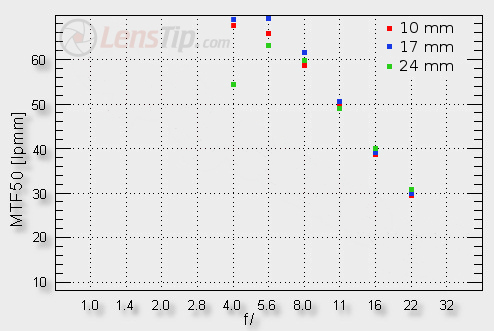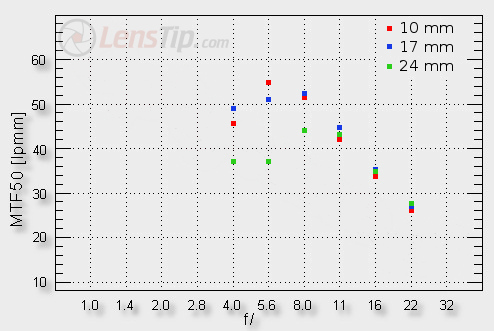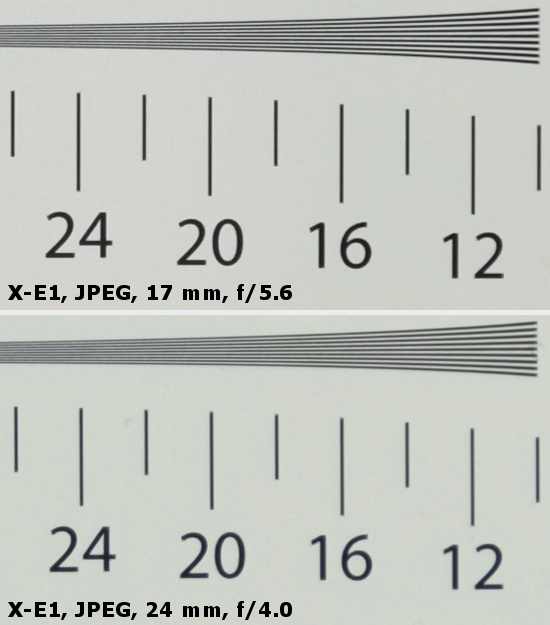Fujifilm Fujinon XF 10-24 mm f/4R OIS
4. Image resolution
Let’s remind here that the best fixed-focus lenses, tested that way, have maximum results of 70-72 lpmm; the decency level is situated near 40-41 lpmm. Now we can check how the tested lens compares here; first its results in the frame centre.

Please Support UsIf you enjoy our reviews and articles, and you want us to continue our work please, support our website by donating through PayPal. The funds are going to be used for paying our editorial team, renting servers, and equipping our testing studio; only that way we will be able to continue providing you interesting content for free. |
- - - - - - - - - - - - - - - - - - - - - - - - - - - - - - - - - - - - - - - - - - - - - - - -
The best values you can observe in the middle of the focal range. By f/4.0 and f/5.6 (so near the maximum relative aperture) you get 69-70 lpmm so a level worth of a good quality fixed-focal lens. For a difficult construction such as a zoom lens it is a really excellent achievement.
A bit worst performance can be observed at 10 mm but it would be difficult to have any reservations here; already at the maximum relative aperture, the MTFs can reach a very high level of 67 lpmm. The resolution of images you get at the shortest focal length is beyond reproach then.
The 24 mm focal length is actually the weakest one, lagging behind all the rest at the maximum relative aperture; still the result you get, over 54 lpmm, remains safely above the decency level, meaning you can still enjoy good quality pictures. On stopping down to f/5.6 the differences between the maximum focal length and the rest of the range are becoming slight and by f/8.0 they disappear completely.
The performance of the Fujinon 10-24 in the frame centre should be assessed very positively, then. Now let’s check the situation on the edge.

The shorter end of the focal range remains beyond reproach – the performance is similar for all focal lengths and quite decent, even at the maximum relative aperture. Still the praise must be limited because the MTFs never exceed 55 lpmm. What’s more, the quite positive image is spoiled by the maximum focal length which neither by f/4.0 nor on stopping down to f/5.6 provides images with an acceptable quality; only after employing the f/8.0 aperture you see values higher than 40 lpmm.
Well, if any focal length had to be weaker on the edge, the maximum one would be actually a good choice. The shorter focal end is used more often, demanding in many cases an even sharpness level across the frame; on stopping down, the tested lens can provide that much. Still, if you take into account its price and the results of similar devices we have to admit we expected something more. For instance the Sigma 10-20 mm f/3.5, a noticeably cheaper and faster instrument, performs as well as the Fujinon, with very even performance at all focal lengths.
At the end of this chapter let us present some crops of our resolution testing chart, taken from JPEG files (with the lowest sharpening level) saved along RAW files we used for the analysis above.
 |






